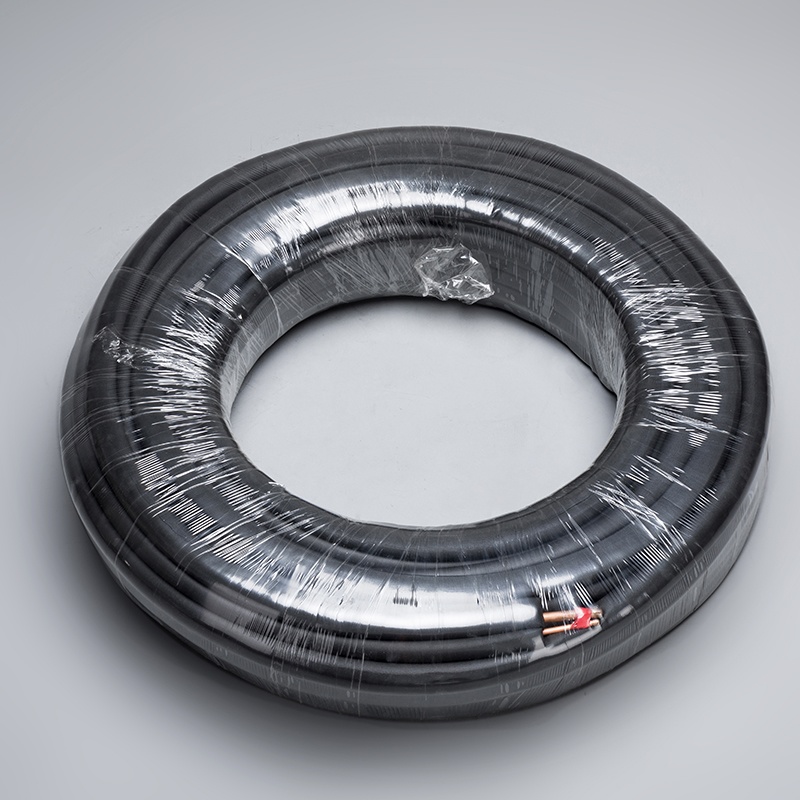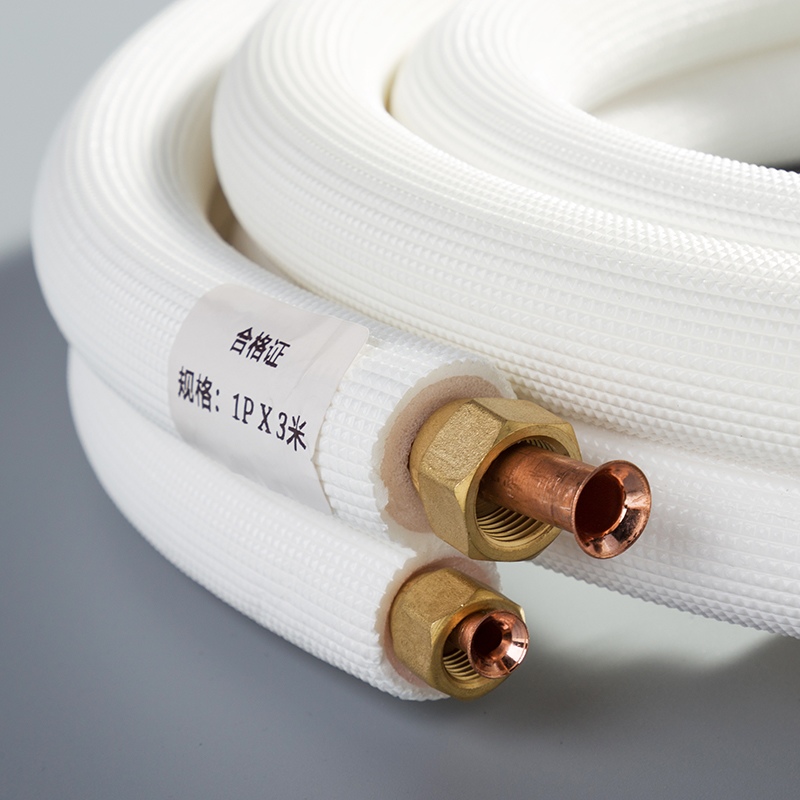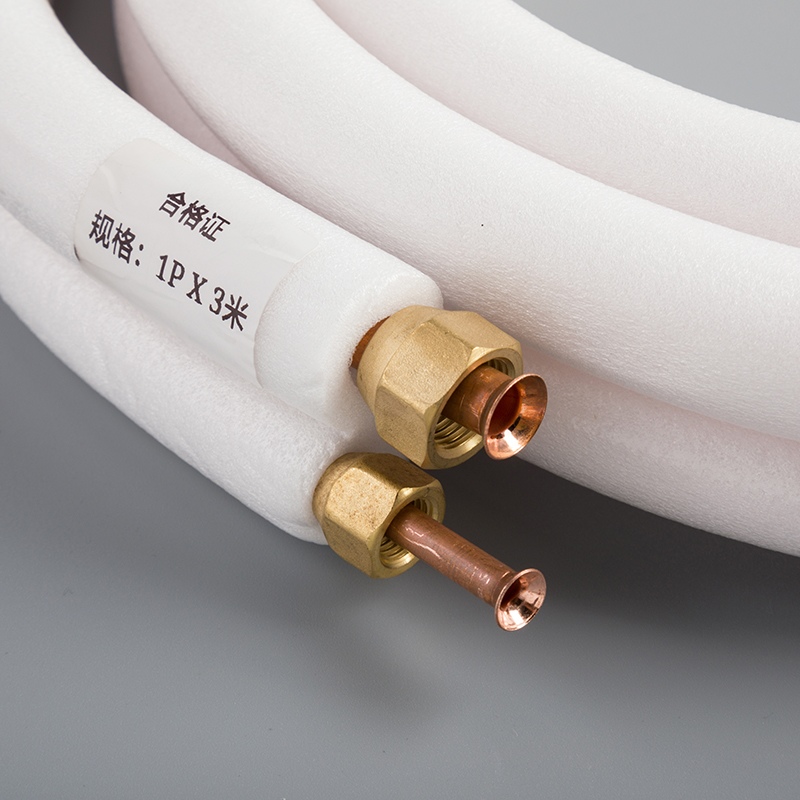Copper Pipe Prices Malaysia: Surprising Air Cond Costs

Copper pipes are essential components in air conditioning systems, and the air cond copper pipe price Malaysia might surprise you. The cost for a 15-meter length ranges from MYR 94.90 to MYR 249.50. These prices can significantly impact your air conditioning expenses, whether you're a homeowner or a business owner. Understanding the air cond copper pipe price Malaysia helps you manage costs effectively. With the market showing fluctuations, keeping an eye on the air conditioner copper pipe price per meter becomes essential for budgeting and planning.
Current Copper Pipe Prices in Malaysia

Average Price Range
When you look at the air cond copper pipe price Malaysia, you'll notice a range of prices. These prices vary based on the size and quality of the pipes. For instance, a 15-meter length can cost anywhere from MYR 94.90 to MYR 249.50. Smaller pipes might cost less, while larger or higher-quality pipes could be more expensive. You should consider these variations when planning your air conditioning budget.
Regional differences also play a role in pricing. In some areas, you might find that the air conditioner copper pipe price per meter is slightly higher due to transportation costs or local demand. In other regions, prices might be lower because of local supply. It's a good idea to compare prices in different areas to find the best deal.
Comparison with Global Prices
How do Malaysian prices stack up against those in other countries? You might be surprised to learn that the air cond copper pipe price Malaysia is quite competitive. In some countries, copper pipes can be more expensive due to higher labor costs or import taxes. In others, they might be cheaper because of local production.
Several factors contribute to these price differences. The availability of copper resources in a country can affect prices. Countries with abundant copper might offer lower prices. Economic conditions also play a part. Exchange rates and inflation can influence the cost of materials. By understanding these factors, you can better appreciate why prices vary globally and make informed decisions about your purchases.
Factors Influencing Copper Pipe Prices
Market Demand and Supply
The air cond copper pipe price Malaysia often reflects the ebb and flow of market demand and supply. Construction and renovation trends play a significant role here. When construction projects surge, the demand for copper pipes increases. This demand can drive up the air conditioner copper pipe price per meter. Renovations also contribute to this demand, as older buildings upgrade their air conditioning systems.
Copper resources availability further influences prices. Malaysia, like many countries, relies on both local and imported copper. When local resources dwindle or imports face disruptions, prices can rise. You might notice these fluctuations when planning your air conditioning projects.
Economic Conditions
Global economic trends also impact copper pipe prices. Economic downturns can lead to reduced demand for construction materials, including copper pipes. Conversely, economic booms can increase demand, pushing prices higher. You should keep an eye on these trends to anticipate changes in the air cond copper pipe price Malaysia.
Currency exchange rates play a crucial role too. When the Malaysian Ringgit weakens against major currencies, imported copper becomes more expensive. This increase affects the air conditioner copper pipe price per meter. Staying informed about currency trends can help you make better purchasing decisions.
Impact on Air Conditioning Costs

Installation Costs
When you install a new air conditioning system, understanding the breakdown of expenses can help you budget effectively. The cost of copper pipes plays a significant role in the total installation cost. Here's a simple breakdown:
Copper Pipes: These are essential for connecting the indoor and outdoor units. The price of copper pipes can vary, but they typically account for a substantial portion of the installation cost.
Labor: Skilled technicians install the system, and labor costs can fluctuate based on the complexity of the installation and regional wage differences.
Additional Materials: Insulation, brackets, and other materials also contribute to the overall cost.
Copper pipe prices directly influence the total installation cost. If copper prices rise, you might see an increase in installation expenses. Keeping an eye on these prices can help you plan your budget more accurately.
Maintenance and Repair Costs
Copper pipe prices don't just affect installation costs; they also impact maintenance and repair expenses. When your air conditioning system needs repairs, the cost of replacement parts, including copper pipes, can add up.
Repair Parts: If a copper pipe needs replacing, the current market price will determine the cost of the repair. Higher copper prices mean higher repair bills.
Labor Costs: Just like with installation, skilled labor is required for repairs. The complexity of the repair can affect labor costs.
Considering the long-term cost implications is crucial for homeowners. Regular maintenance can help prevent costly repairs. By staying informed about copper pipe prices, you can anticipate potential expenses and make informed decisions about when to repair or replace parts of your system.
Copper pipes are vital in the HVAC industry due to their heat transfer capabilities. Their demand impacts the market, affecting both installation and maintenance costs. By understanding these factors, you can better manage your air conditioning expenses and ensure your system runs efficiently.
Tips to Manage or Reduce Costs
Choosing the Right Type of Copper Pipe
When it comes to selecting copper pipes for your air conditioning system, understanding the benefits of different types can help you make an informed decision. Copper pipes come in various types, each suited for specific applications:
Type K: These pipes have the thickest walls, making them ideal for underground and high-pressure applications. They offer excellent durability and corrosion resistance, which can be beneficial in certain environments.
Type L: Known for their moderate thickness, these pipes are commonly used in interior plumbing and some HVAC applications. They provide a good balance between cost and performance, making them a popular choice for residential and commercial buildings.
Type M: With the thinnest walls, Type M pipes are more cost-effective but are limited to lower-pressure applications. They are suitable for general residential use where high pressure is not a concern.
Choosing the right type of copper pipe can significantly impact your air conditioning costs. While Type K offers superior durability, it might be overkill for standard residential systems. On the other hand, Type M provides a budget-friendly option for less demanding applications. Evaluating the cost-effectiveness of each type based on your specific needs can help you manage expenses better.
Considering Alternative Materials
Exploring alternatives to copper pipes can also offer cost-saving opportunities. While copper is renowned for its thermal conductivity and corrosion resistance, other materials might suit your needs:
PVC (Polyvinyl Chloride): This material is lightweight and easy to install. It's often used in plumbing but lacks the thermal conductivity of copper, making it less ideal for HVAC systems.
PEX (Cross-linked Polyethylene): PEX is flexible and resistant to scale and chlorine, making it a popular choice for plumbing. However, it doesn't match copper's heat transfer capabilities.
Aluminum: Known for being lightweight and cost-effective, aluminum can serve as an alternative in some HVAC applications. It offers decent thermal conductivity but may not be as durable as copper.
When comparing costs, copper pipes might initially seem more expensive. However, their durability and efficiency often justify the investment over time. Alternatives like PVC and PEX can reduce upfront costs but may lead to higher maintenance expenses. Weighing the pros and cons of each material against the air conditioner copper pipe price per meter can guide you in making a cost-effective choice.
You've explored the ins and outs of copper pipe prices in Malaysia and their impact on air conditioning costs. From understanding price variations to considering alternative materials, you've gained valuable insights. Looking ahead, the copper pipes market may see growth due to trends in construction and renewable energy. Staying informed about these trends can help you make smart decisions. Keep an eye on market changes and consider cost-saving strategies to manage your expenses effectively. Remember, being proactive can save you money in the long run.
See Also
The Power of Copper Pipes in Boosting AC Performance
Exploring How Copper Pipes Enhance Air Conditioning Efficiency
Top Reasons to Opt for Copper Pipes in AC Systems
Comparing Copper and Aluminum Tubes for Optimal Air Conditioning
Transforming Air Conditioning with Innovative Copper Pipe Solutions


